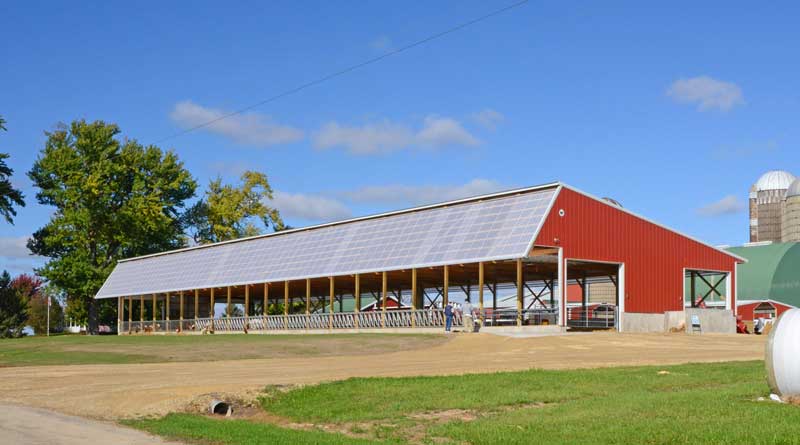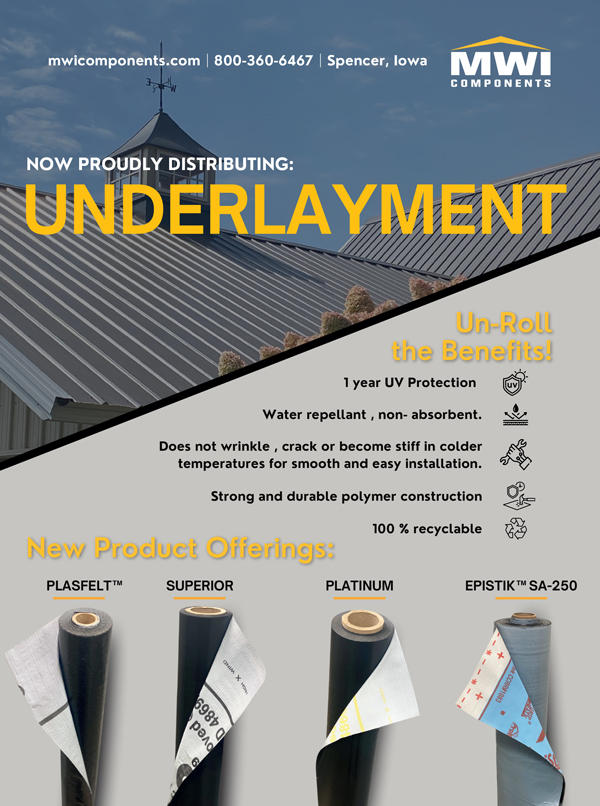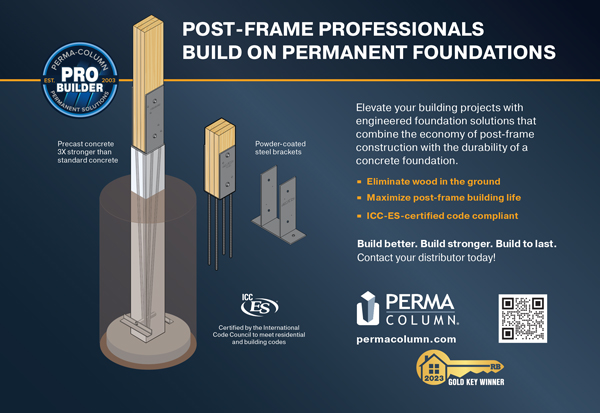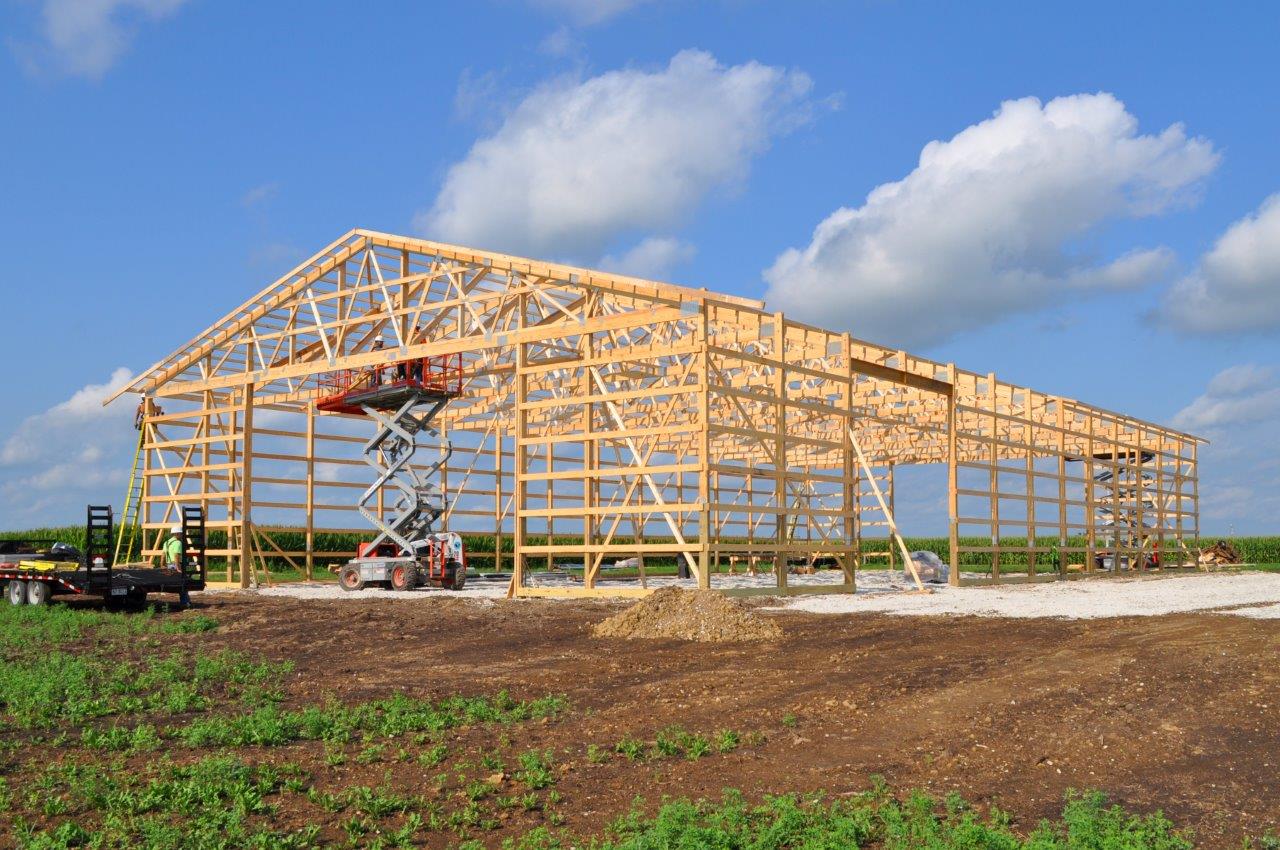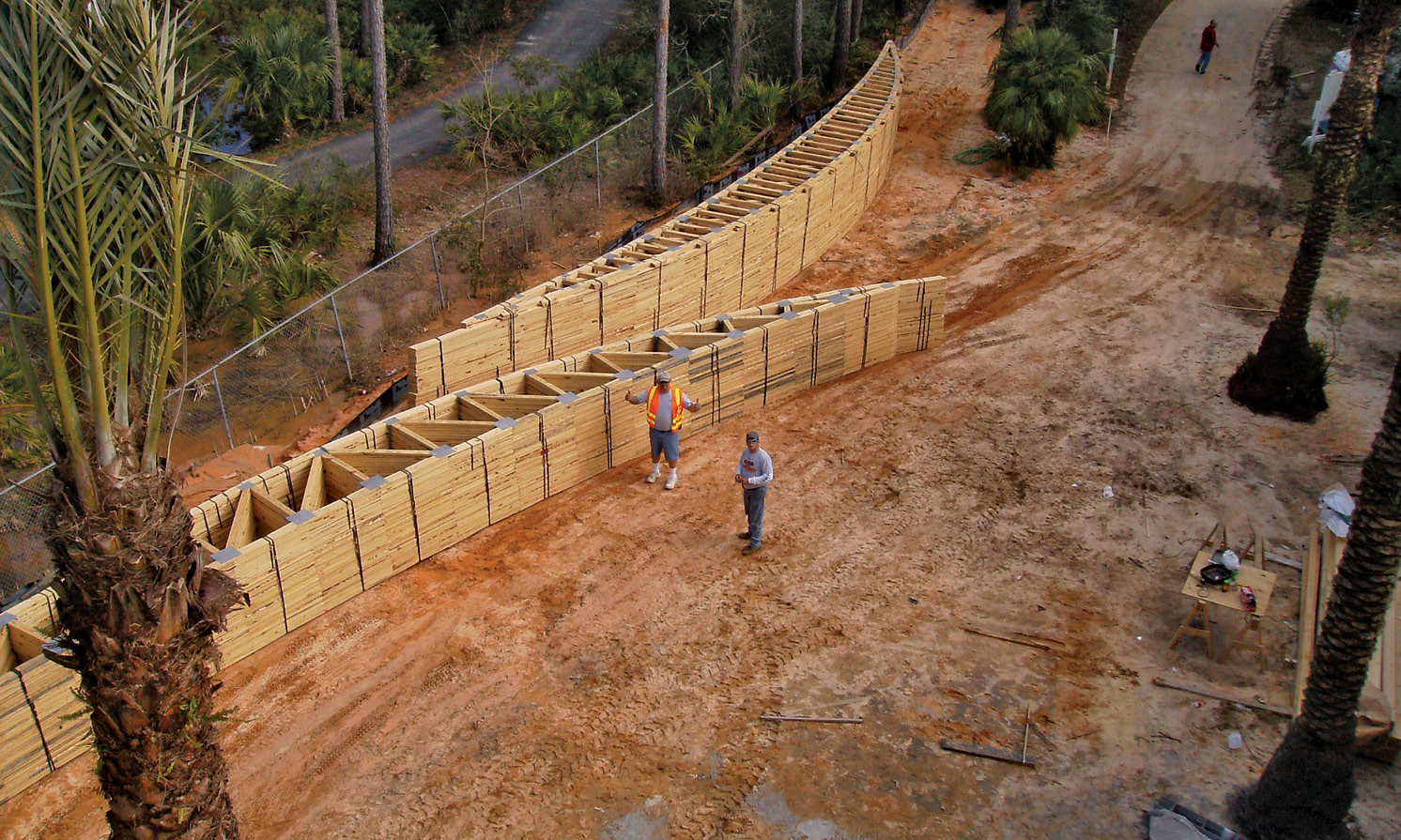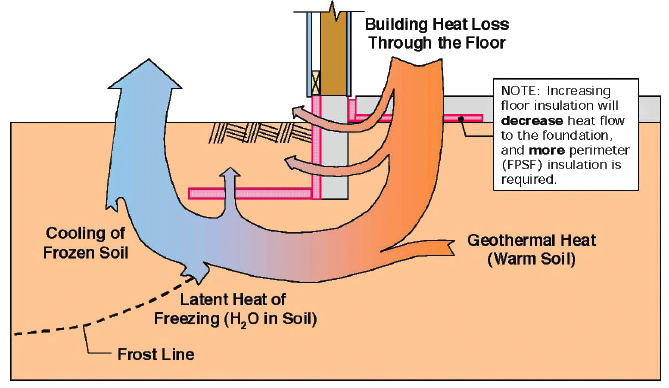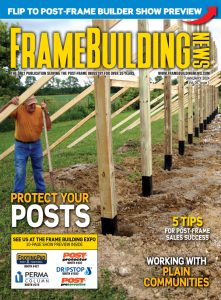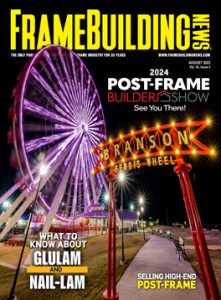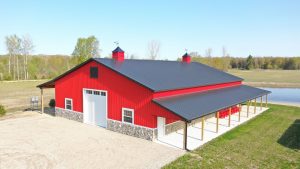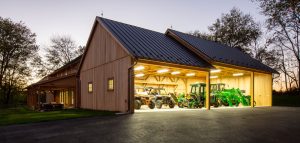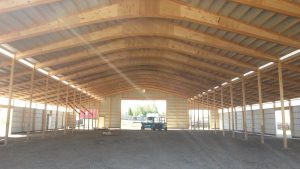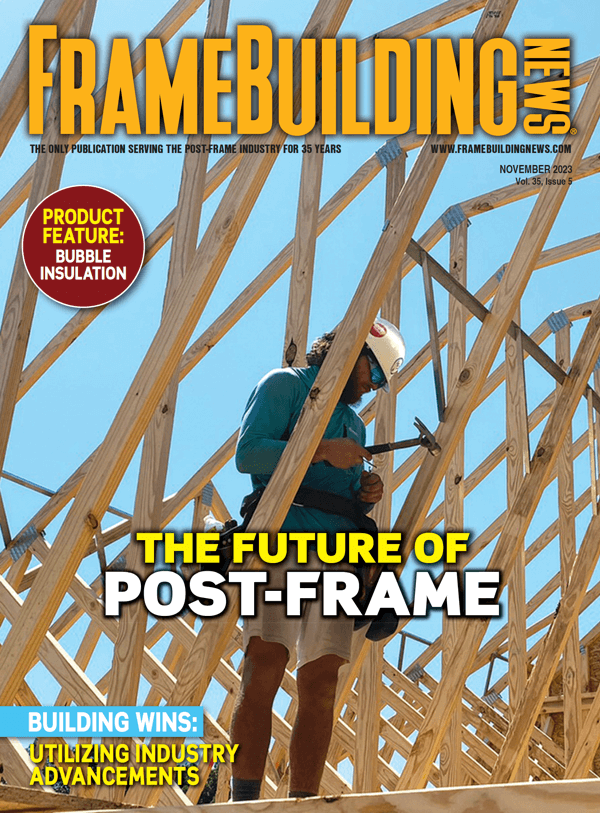By Karen Knapstein
There’s nothing unnatural about the harsh nature of animal confines. However, although natural, the interior environment is certainly not inert — it’s quite destructive. Biogases, produced by the fermentation of organic matter, and moisture from waste, weather, and animal respiration all contribute to the corrosive environment that affects agricultural buildings. Thankfully, there are many building components that can be used to minimize the impact of the corrosive environment on a post-frame building, which will help assure the structure you build today will be around for generations to come.
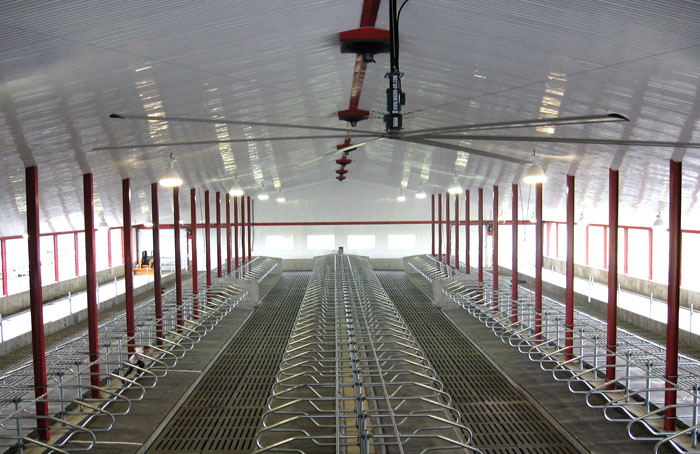
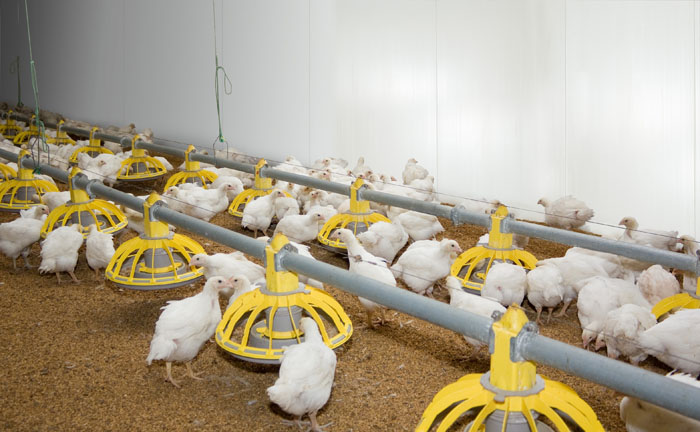
Panels & Fasteners: Protecting the Metal
The steel so commonly used on agricultural and animal confinement buildings is hardly immune to the effects of the corrosive environment. However, it is better prepared for the onslaught of corrosive elements than it once was. David Quehl, Director of Sales & Marketing, Direct Metals Inc., explains, “Roll-formed metal roofing panel quality has improved dramatically over the past 20 years. The combination of high-quality paint systems and protective substrate coatings allow panel manufacturers to offer 40-year warranties against red rust corrosion. This is especially important where
agricultural building environments like animal confinement present challenges to those coatings and paint systems. The presence of fertilizers, pesticides and animal waste magnifies these challenges. For these applications, it’s important to supply a metal roofing panel with enough zinc and barrier coatings to prevent early corrosion.”
One way to protect the metal panel on this inside is by using a condensation barrier. “DR!PSTOP is the perfect product to use in animal confinement,” says Tony DelGhingaro, VP – FILC USA. “In addition to controlling condensation, where applied, DR!PSTOP protects the steel by preventing corrosive elements from ever touching the steel.
“The glue used to adhere DR!PSTOP creates a ‘rubber-like’ barrier from the acidic environment,” he explains. “We know from testing this definitively prolongs the life of the steel. However, due to the numerous variables associated
with animal confinement, it’s almost impossible to say exactly ‘how much’ longer.”
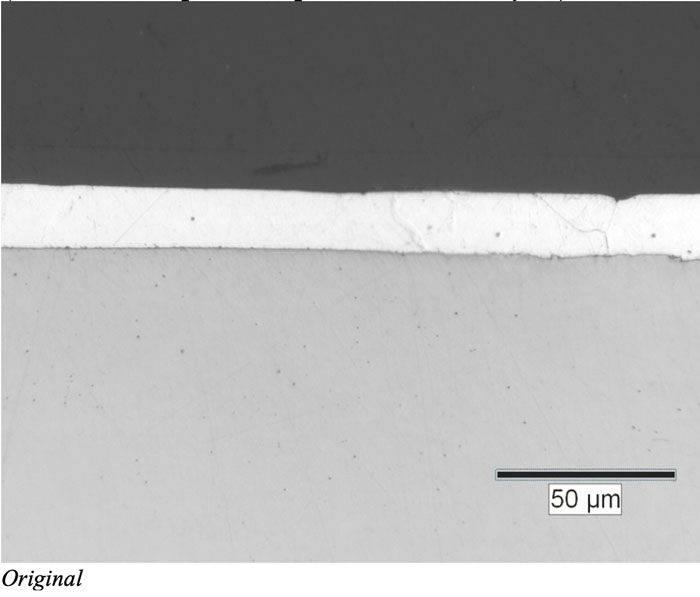
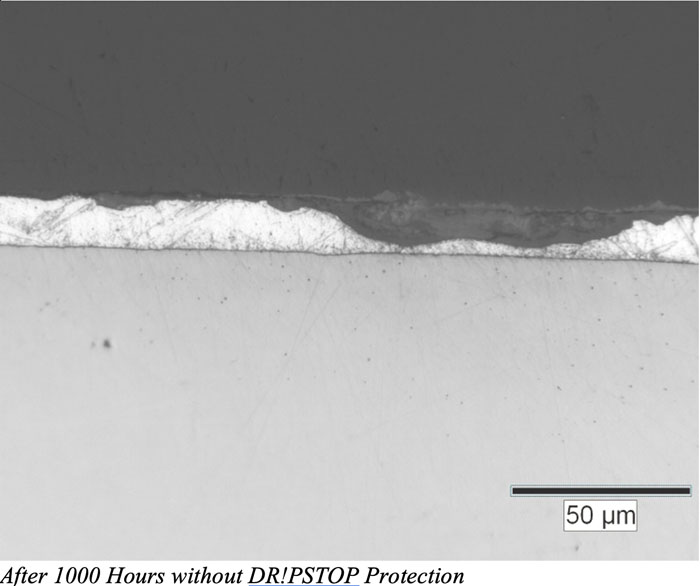
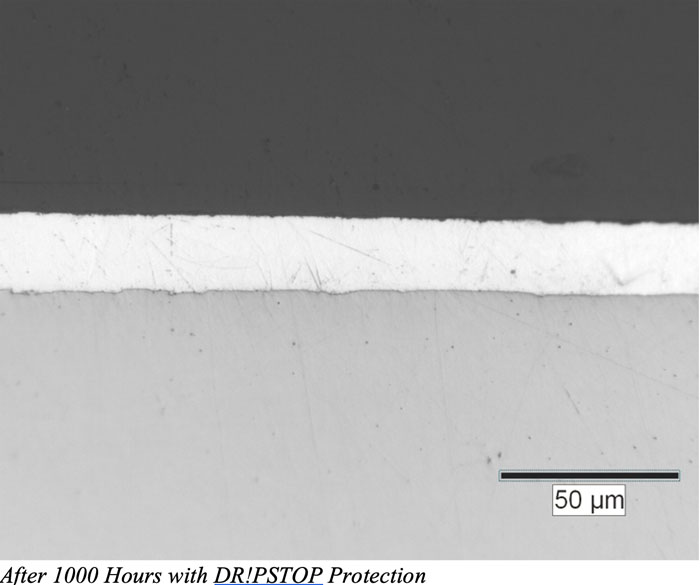
In addition to using protected steel, it’s also important to select the right fasteners for the material and the harsh environment. “A fastener failure can cause damage to a metal panel and, in some cases, require replacement of the fasteners and panel,” Quehl explains. “Many fasteners available today have a minimal amount of zinc plating, as little as 4 microns, which is defined as commercial grade. This provides protection in low corrosion applications. However, in an extreme environment, the commercial grade thickness is not suitable to prevent corrosion, primarily because of the stress to the coating on the fastener head and threads from a hex socket and installation tool like an impact driver. For this reason, it is recommended to use a coating thickness and quality paint system that will withstand pressure from the installation tool. The best option is to use a long-life fastener, either 304 SS or a zinc-aluminum alloy, both of which match the warranty on most metal panels. DMI offers coatings and long-life fastener options that are compliant with Dade County Florida specifications.
“While fasteners make up a small percentage of the overall cost of a building project,” Quehl continues, “a poor choice of fasteners based strictly on cost will create a large percentage of call backs on that project due to inferior corrosion protection. Always specify a fastener that will equal the warranty of the metal panel.”
In addition to hazardous conditions caused by animals, treated lumber can also be corrosive to fasteners. “Producers of treated lumber and many building codes specify hot-dipped galvanized or stainless-steel nails because they have a life expectancy comparable to that of the treated lumber,” explains Maze Nails marketing director Lisa Martin. “The International Residential Code- section R317.3.1 and the 2018 International Building Code-Section 2304.10.5.1 both state ‘Fasteners in contact with preservative-treated wood shall be of Hot-Dipped Zinc-coated galvanized steel, stainless steel, silicon bronze or copper.’ Maze coating weights for zinc-coated fasteners are in accordance with ASTM A-153.” The codes also state Stainless Steel fasteners shall be in accordance with the material requirements of ASTM F1667.
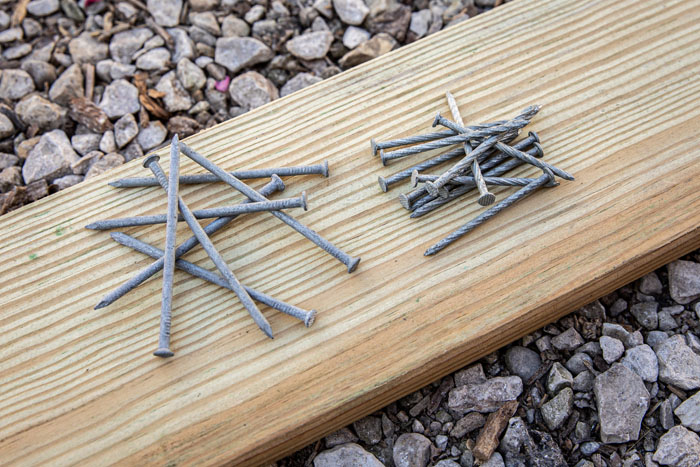
Speaking generally about corrosive environments and construction, Maze Nails president Roelif Loveland says, “Stainless steel is the ideal choice for corrosive environments since a very thin oxide layer forms on the surface of the stainless steel to protect it. This film is due to the chromium that is added into the carbon steel during production — changing the nature of the iron oxidation. This ‘passive layer’ renders the surface electrochemically passive and rust-resistant, in the presence of corrosive elements or substances. Even if the layer is scratched or removed in some way, it will reform and continue to provide protection.
“True ‘stainless’ steel must contain at least 10.5% chromium,” he explains. “Nickel is also added to create type 304/305 stainless steel alloys — and both nickel and molybdenum are added to create type 316 stainless steel.
“There are a myriad of environments and applications that benefit from the use of stainless steel fasteners,” Loveland continues. “Since animal sweat and waste can be particularly corrosive, hog confinement buildings and other livestock areas are ideal projects for using this rugged material. Maze Nails manufactures a very wide line of Stainless Steel Type 304 and 316 nails – in plain shank and ring shank – in hand-driven and pneumatic-tool formats. The alloy itself ‘work-hardens’ during the nail making process – so these fasteners tend to be very durable and bend-resistant during pounding.”
If using aluminum panels instead of steel, especially in interior liner panel applications, extra caution should be used when selecting fasteners. “The default option for fasteners has historically been 304 SS,” Quehl says. “However, more and more data show that, depending upon the alloy of the sheet, aluminum can react to the stainless in a negative way because of the dissimilar metals contact. The panel will actually sacrifice itself to the fastener and begin to degrade. One should consult with the aluminum supplier for a proper recommendation. One option is to provide an aluminum fastener that will not have a negative reaction. DMI supplies a #12 diameter metal-to-wood aluminum self-drill that can be used on any aluminum panel with no adverse reaction.”
Healthy Environment
Natural light contributes to the health and well-being of animals, so it is an important feature in animal confinement buildings. Onduline (us.onduline.com/pro) manufactures TUFTEX polycarbonate sheets in popular metal profiles for daylighting purposes, which are commonly used in poultry confinement structures. Since hens need at least 12 hours of light per day to lay, when the owner can take advantage of free daylight, they can reduce lighting costs. “Polycarbonate is all about ‘free light,’ using daylight in structures rather than electric lights,” says Buddy Pullen, Vice President of Pro Sales, TUFTEX. “In some cases, it is about economics but in poultry housing it is more about natural daylight increasing growth yields.”
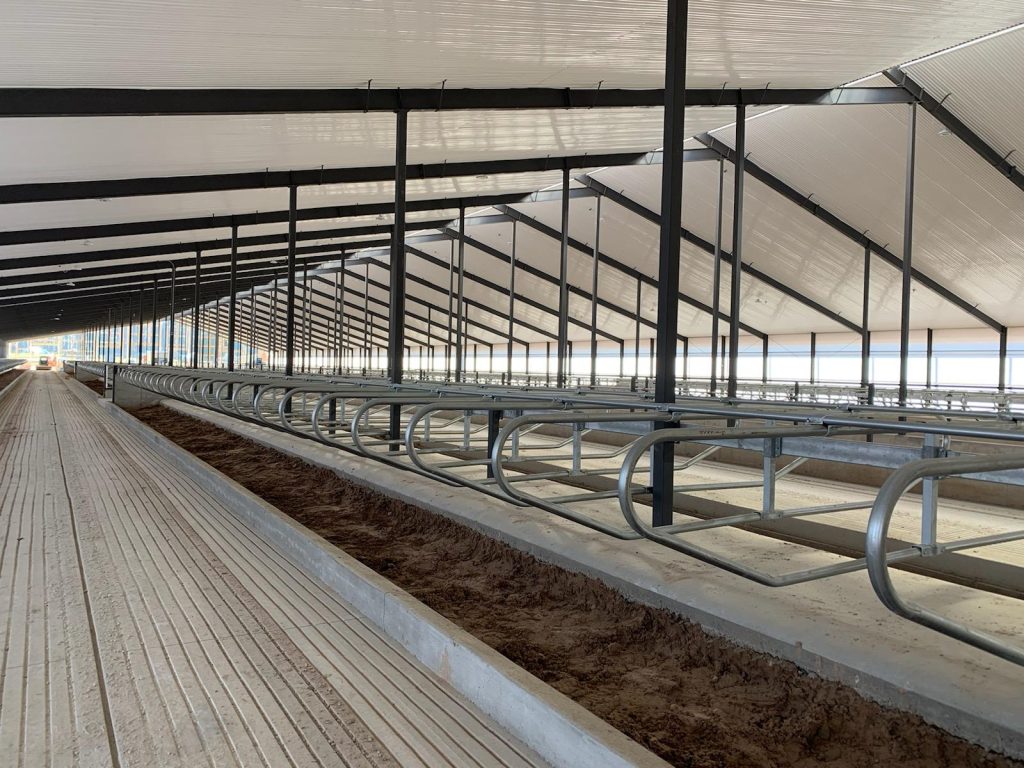
PVC liner panels also improve the interior conditions of animal confinement buildings and are resistant to the corrosive elements inherent to animal confinement. Designed for installation on ceilings, TUFTEX Ag Foam sheets are rigid corrugated panels that are 38” wide with a 9” on center profile”; lengths are available up to 24’4”. The PVC panels are corrosion resistant and won’t rust, rot, chip, or peel. They are non-flammable, have excellent light reflectivity, stand up to high water pressure cleaning, and are easy to install. “PVC will not rust or corrode from ammonia and other harmful compounds commonly found in animal waste and its off gassing, and offers some noise dampening qualities keeping livestock calmer,” Pullen says. “It is also used in fertilizer and salt storage buildings for the same reasons.”
Proper installation will ensure the performance of PVC and polycarbonate sheets. Pullen cautions, “Builders need to predrill for expansion and contraction and on any installation other than walls the maximum span is 24”. The Ag Foam sheets are only for ceilings and can span 48”.”
“Agricultural environments such as pork and poultry farms, dairies, and stables can present challenges for any cladding material,” adds Brenda Hogan, Director of Marketing, Palram Americas (https://www.palram.com/us/). “Gases such as ammonia and hydrogen are common in livestock feeding or housing environments, and they are the source of quick and widespread rust and corrosion for metal, resulting in high maintenance and replacement costs.”
Palram’s PVC products include AG-TUF® Corrugated PVC Liner Panels and DURACLAD® Interlocking PVC Multiwall Panels. Both offer a corrosion-free and chemical-resistant alternative. The PVC panels are low cost and low maintenance, and are also impervious to bacteria, mold, and mildew. Panels can be frequently cleaned to facilitate maximum sanitary maintenance without premature wear and tear.
Both products are offered in bright white for high light reflectance. Standard AG-TUF is designed for interior cladding and AG-TUF UV is designed for exterior cladding applications. Panels are thru-fastened to framing support, and panel corrugations overlap to ensure proper panel alignment. DURACLAD features a multiwall structure, providing a high level of rigidity and strength. Interlocking tongue-and-groove edges with concealed, slotted fastener holes allow for expansion and contraction, quick installation, and a smooth and hygienic finish.
Posts & Foundations
Ken McDonnell developed a post-frame foundation decay protection system that is comprised of the Post Protector and the Skirt-Board Protector (www.postprotector.com). The system prevents contact with soil, moisture, animal waste and other materials that will cause wood degradation. The Post Protector slips onto the post and is positioned in the decay zone (approximately 8” above grade to 14-16” below grade) and the Skirt-Board Protector, which clips over the skirt board. “If there is animal waste around a post or on a skirt board, the wood is going to be compromised,” he says. “Post Protector is simply a physical barrier so there isn’t direct contact.” The barrier system is made from a specialty high-density polyethylene that is commonly used in landfill liners. “The material is flexible and really strong. Anything coming in contact with the post has had zero ill effects on this material.”
PlanetSaver Industries (www.planetsaverind.com) manufactures the GreenPost, a unique post product that is treated against decay and pests. PlanetSaver’s Barry Hoffman explains the problems that builders have been seeing and how the GreenPost helps solve those problems: “What we’re hearing from builders is with today’s fast growing timber growth rings farther apart after 8 or 9 years of being in the ground, treated posts are seeing some rot.” Rot typically happens in the “decay zone”; this is the area where microbes thrive thanks to the moisture and oxygen levels in the top 6-8” of the soil.
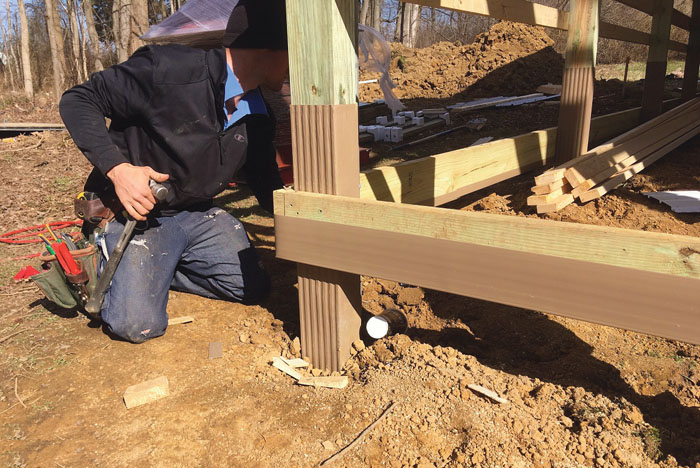
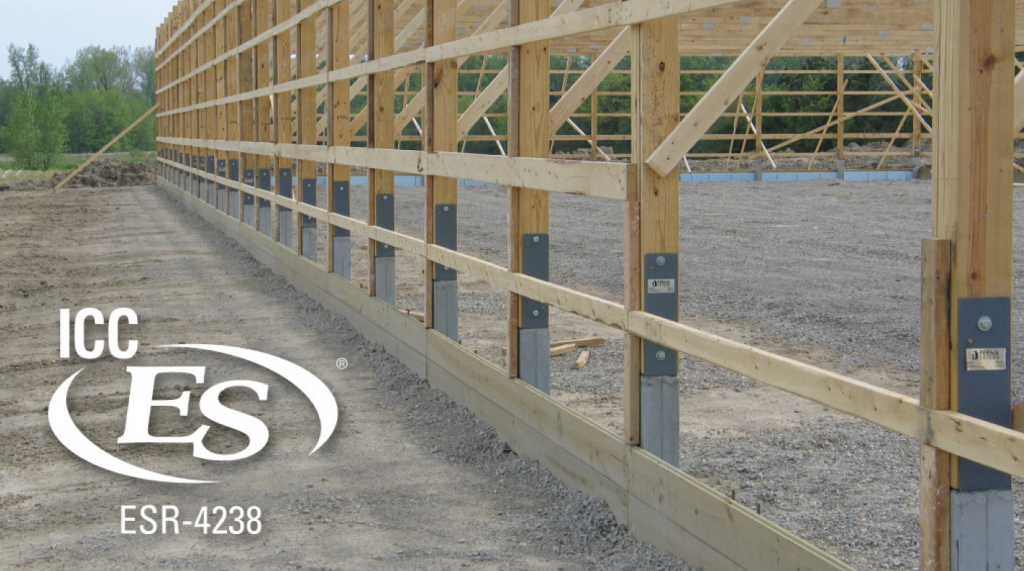
The GreenPost process creates an impermeable double barrier that keeps the wood treatment chemicals inside the wood and moisture and pests away from the wood. The double barrier consists of a water-based asphalt emulsion plus a layer of polyethylene, which then goes into an oven at over 600 degrees for a heat curing process. The polyethylene layer is very similar to the polyethylene blend that’s used in landfill liners, which last about 100 years.
PlanetSaver also offers a polyethylene sleeve that can be applied by builders to posts sourced elsewhere. It’s as stable as the wrap that’s applied to the GreenPost. You must apply the wrap to the area of the post that will be in the decay zone. Sleeves have the flexibility of being positioned anywhere on the post so you have from 2”-6” above ground for proper protection required for it to be effective. “Once you put the post sleeve on, you don’t have to worry about the post destabilizing because of rot. The only thing you have to worry about is what happens to your post above the ground,” says Hoffman.
Perma-Column® (www.permacolumn.com) concrete piers are a popular choice because of their resistance to rot and corrosion. Made to last, the piers are made with 10,000 PSI precast concrete and 60,000 PSI rebar. The quarter-inch steel brackets used to attach the posts are powder-coated to prevent rust and corrosion. “Over 50 percent of our projects are agricultural construction,” says Mark Stover of Perma-Column. “Instead of putting wood in the ground that will rot, we use pre-cast concrete with steel brackets that connect to the rest of the wood frame. This eliminates the need for treated lumber in the columns.” By elevating the wood out of the ground, it’s no longer in constant contact with the microorganism-filled materials that cause decay.
Ventilation
Ventilation is crucial in animal confinement buildings. Biogases become problematic if ventilation is lacking. A suitable ventilation system should be in place to prevent buildup of the corrosive gases. “A ventilation system works at optimum performance when installed with equal amount of soffit ventilation,” says Martin Rotter of Ventco (www.profilevent.com), which manufactures ProfileVent. “The ventilation system allows for the flow of fresh air into and throughout the building, while allowing excess heat, moisture, and fumes an opportunity to escape.”
Conclusion
Ultimately, not all buildings are suitable for animal confinement. If a structure isn’t made or prepared for housing animals,
either the animals will suffer or the building will, if not both. By using components designed to withstand the corrosive elements so commonly found in agricultural settings, it will help assure the structures your company builds will stand up to use for generations to come. Which is important – especially if you put your logo on the side of the building. FBN


